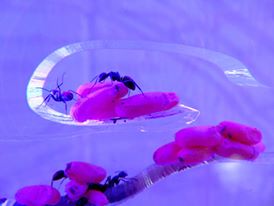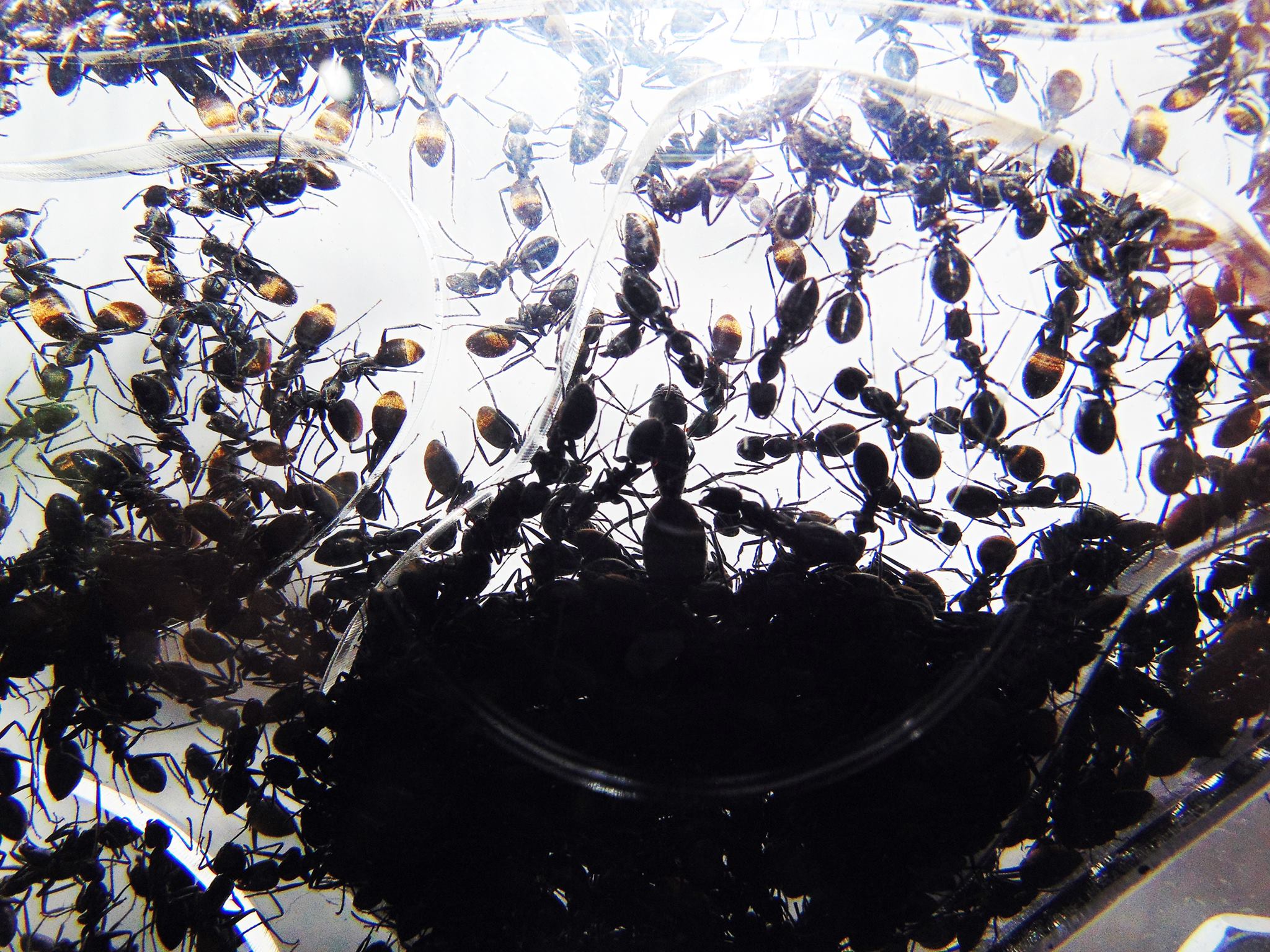Formicarium of the 1/4, 2017
We're back! And to celebrate we're featuring an amazing formicarium you're going to love.
All the way from Chile is this formicarium from Robert Fuentalba Ojeda. You dont want to miss this one.
Components
- - 6 internal hydration points.
- - Bio-waste filters.
- - Lower ducts, air injection.
- - Microduct ejectors.
- - Internal water containers, with regulating valves.
- - Zone of high security.
- - Macroalveolar control partitions.
- - Macroalveolar zone.
- - Inside Cemetery.
- - Cemetery filter.
- - Thermo-convector front panel.
- - Limit plates.
- - Distribution pipelines.
- - External distribution boxes.
- - Paludarium garden.
- - Water Pump.
- - Ultrasonic nebulizer.
- - Filters.
- - Heat exchanger.
- - Remote control.
A 4m x 2m flat wall is required to install the motherboard and the outworld ant system. The system can be connected to other devices, such as an exclusive area for larval and cricket hunting, a zone of physical abilities, an area for interactions or experiments, etc. All of these devices are interconnected through acrylic distributors joined by 13mm thick tubes.
The ants settle inside the formicarium and from there they go through the tubes until they reach the outworld and interact with the plants. They can raise aphids to take advantage of their milk, and take care of them. In addition, they can collect extrafloral nectar and floral nectar, and explore the whole paludarium.
The materials used for the formicarium.
In this case, high transparency acrylic plates are used because of its low toxicity rates, being safer more resistant and also a malleable polymer, and offers ants well-being.
“The entire Formicarium system is a removable, safe and aesthetic design.”
The materials can also be supplemented. For example the hydration points and internal cemetery filters, are made of compact cellulose. All the materials and design in general is laser cut. The entire Formicarium system is a removable, safe and aesthetic design.
The species housed in the formicarium.
Each species has its own morphostructural characteristics and colonial and individual needs, as well as behaviors. These are the factors that regulate the designs of the nest. And the designs are to meet the demands of every ant. Ants that have adhesion glands are perfect for this design, but not those that can not climb flat surfaces. In addition the ants that construct their nests in the ground are ideal.
In this case, it is Camponotus spinolae and Camponotus chilensis. Both species have internal hydration points, internal cemetery, and only have absorbed absorption filters of percolated fluids.
An air injection and ejection system has been designed. Finally the front display plate is a acrylic plate 4mm thick, which captures the caloric radiation of the environment and functions as a heater of the internal air raising the air and initiating a flow of injection and internal convection. This system is built by the ants in nature. And here it is represented.
The time it took to build the formicarium.
The research on the architectural engineering of each species is an ongoing projects, which shows that each species has well established architectural patterns relating to an evolutionary process of adaptation and learning and management of habitat or ecological niche. Where ants build their nest, it is called a nesting element. And it can be sand dunes, rotten wood or inside a walnut.
The construction of this design of Formicarium Mural, was approximately two months. The establishment of the colony took 2 weeks. The time of adaptation of the colony within the system is relative, and depends on the speed at which the workers explores, memorize the routes, and learn to use the system. In addition to creating mind maps and creating a colonial collective memory of the whole system.
“I have also made a super protein food for ants in captivity of differing species.”
How successful the formicarium has been.
Complying with the environmental and structural requirements of the species, the success of the operation is optimal. Ants do not need the formicarium to have dirt or other materials from nature, because they only require a home and where to walk. The less health risks they have, the better for colony health.
After a month of settling in the ants can start to use all internal resources and explore their surroundings. The formicarium system also has a maximum security zone. In nature large colonies construct small cavities as a protection zone for when intrusions occur, whether earthquakes, volcanic activities, floods, etc. The design includes all of these resources.
Feeding methods and diet.
The diet depends on the species and its nutritional requirements and behaviors.
In the Formicarium Mural system, the ants feed within the outworld. Here they collect extrafloral nectar from the plants, or sugary juices from their livestock installed in the plants. Mealworms are also provided between plants, and they are trapped so that the ants may hunt them.
I have also made a super protein food for ants in captivity of many species.
The food is soluble in water, and has a gel molecular body, based on soluble and insoluble proteins and various vitamin and mineral complexes. The base of this food, is extrafloral nectar, nectar peciolar and nectar floral, extracted from flowers of the Atacama Desert. Some flavonoids are obtained from wild fruits.
The frequency of food doses depends on colonial demand and seasonality. Foods are liquid or solid. Liquid foods are placed with pipettes on plates. Solid foods like mush, are put into dishes. And the larvae are placed in a hunting area that can have the same dimensions of the outworld and be connected directly to the formicarium. Finally the ants choose their food according to the menu offered and the interconnections of the systems.
Daily / Weekly Maintenance
The formicarium has various interlocking acrylic plates, these small plates are removable and can be cleaned inside as required maybe once a year.
“They can raise aphids to take advantage of their milk, and take care of them.”
The filters of the hydration points are cleaned once every 6 months or once a year. Depending on the saturation levels of fecal masses. The filters absorb the liquid feces and this is evaporated by the ventilation system of the hydration points. The cemetery room has an autonomous ventilation system.
In the outworld it is good to prune the plants and prevent the plants from touching the lateral edges to avoid the ants from escaping every two months. An ant or insect barrier should be used, which I make myself and have a local duration of about 2 weeks.
Ants recognize the artificial system and its components as their home. New generations are related to these structures and that will be part of their collective and individual memories, They will not know other nesting systems. Each component will be used by the ants safely and potentially.
We'd like to thank Robert for his incredible insight into this amazing formicarium system. I'm sure we all have something to learn from him. Amazing.
If you've got a formicarium you'd like featured, drop us an email.

















































